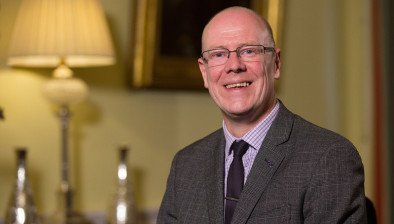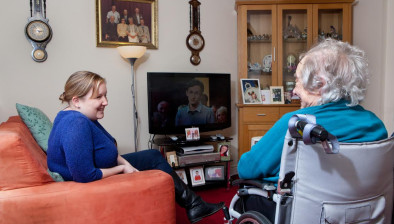Health & social care integration to go live from April 1st

The single biggest reform to the way health and social care is delivered in Scotland since the creation of the NHS will become fully operational in just a few weeks.
Legislation to implement health and social care integration, passed by the Scottish Parliament in February 2014, will come in to force on April 1 – bringing together NHS and local council care services under one partnership arrangement for each area.
In total 31 local partnerships have been set up across Scotland and will manage almost £8 billion of health and social care resources, including those currently associated with 96 per cent of delayed discharge and 83 per cent of unplanned admissions in the over 75s.
From next month both organisations will be jointly responsible for the health and care needs of patients, in particular the elderly, to ensure when people move between hospital and care settings their journey is better coordinated and as seamless as possible.
Many partnerships have been working in ‘shadow form’ during 2015/16 and have already started to deliver results – including a 21 per cent drop in patients waiting over three days to be discharged from hospital in January, compared to the same time last year.
Today, health secretary Shona Robison visited Perth to meet a local woman who was admitted as an emergency to hospital and was supported to return home by Enhanced Community Support – a service set up by the new Perth & Kinross Health & Social Care Partnership.
The service involves an integrated team of professionals, such as medical consultants, GPs, community nurses, social workers, voluntary sector colleagues and mental health nurses, working to support patients in the community and avoid unnecessary readmission to hospital.
Ms Robison said: “Integration is one of the most ambitious programmes of work this Government has ever undertaken, and one which we believe will deliver health and social care services that work more efficiently around the needs of patients.
“Integration has been over two years in the planning, and a huge amount of work has been undertaken by both the Scottish Government and all of our partners in the health and social care sector, to get us to April 1.
“These efforts have meant we are making better progress on integrating services than any other part of the UK – a fact recognised by both the OECD and the King’s Fund.
“We now have 31 integrated partnerships set up in every area across Scotland, many of which have already started making improvements to the way their services are run.
“We’ve provided over half a billion pounds of funding over three years to ensure integration drives change, as well as a further £250 million for social care announced in next year’s budget.
“Many local areas have already seized this opportunity and are developing new ways of working that benefit their patients. This is what we had always anticipated – local areas making local decisions about their local services – and I’m pleased to see such a fantastic example of this in Perth today.”
Councillor Peter Johnston, Cosla spokesperson for health and wellbeing, said: “Integration of health and social care has the potential to dramatically improve outcomes for people of all ages by radically transforming services and shifting the balance of care.
“While the IJBs now formally take on their responsibilities, it is worth recognising that tremendous efforts have already been made by all those involved including councils and local authority staff to support the changes needed to get to this point.
“We are still at the beginning of a long and challenging journey but as parent bodies of the IJBs, councils will continue to be actively involved in promoting and contributing to this critical partnership agenda.”
Perth and Kinross Health and Social Care Partnership chief officer, Robert Packham, added: “We are delighted to welcome the Cabinet Secretary on her visit to the Headquarters of Perth and Kinross Association of Voluntary Services (PKAVS).
“Perth and Kinross is building on strong foundations; I am privileged to work with dedicated people who were already working closely across their different organisations. Our plan is built on evidence of best practice from health and care systems across the UK and abroad, backed up by feedback from over 4,000 people who took time to challenge our thinking and share ideas that underpin the changes we now begin to introduce.
“Our residents are getting older and will require increasing levels and a greater range of support services in the years to come. People living in the city, in small towns and remote communities will require public services to be delivered in different ways. Change on this scale takes time, yet we start with a clear vision for the future.”









